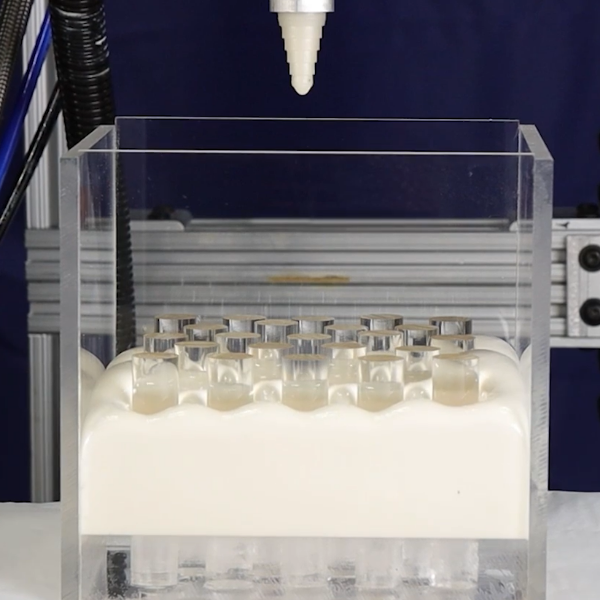Battery Encapsulation
Home » Capabilities Overview » EV BATTERY » Battery Encapsulation
Battery encapsulation is used to enhance the structure and rigidity of battery packs. This process secures the cells and protects them from shocks and vibrations. The materials like silicone, silicone foam, epoxy, epoxy foam, and polyurethane foam are used to do so.
Encapsulation foams are mixed and dispensed into a module to fill the gaps between each cell, providing extra stability, increasing thermal insulation, and preventing thermal runaway. Patvin offers comprehensive solutions for effective battery encapsulation, ensuring optimal performance and safety. Get in touch with us for more details!
Patvin Solutions for Battery Encapsulation:




FAQs
Battery encapsulation involves sealing batteries in protective materials enhancing safety and performance thus preventing moisture, dust and physical damage. This also manages heat within the battery, being crucial for maintaining efficiency and longevity.
Battery encapsulates are materials that protect and insulate batteries. These encapsulants are made from multiple resins such as epoxy or polyurethane, improving thermal management and providing mechanical support ensuring safe operation of the batteries in any condition
EV battery encapsulation provides multiple benefits for electric vehicles, such as:
- Thermal Management
- Impact Protection
- Prevention of Thermal Runaway
- Moisture and Contaminant Protection
- Enhanced Longevity
- Weight Reduction
EV battery cell to cell insulation is the separation and protection of battery cells within a pack thus preventing electrical shorts and thermal propagation between cells. Insulation is necessary for maintaining safety and performance in EVs.
Thermal management regulates temperature within cells making it necessary in battery encapsulation preventing overheating and ensuring optimal battery performance. Proper thermal control prevents overheating, which can lead to reduced efficiency or failure.
Materials used in battery encapsulation are:
- Epoxy Resins
- Polyurethane
- Silicone
- Acrylics
- Foams
- Fiberglass
- Mica

